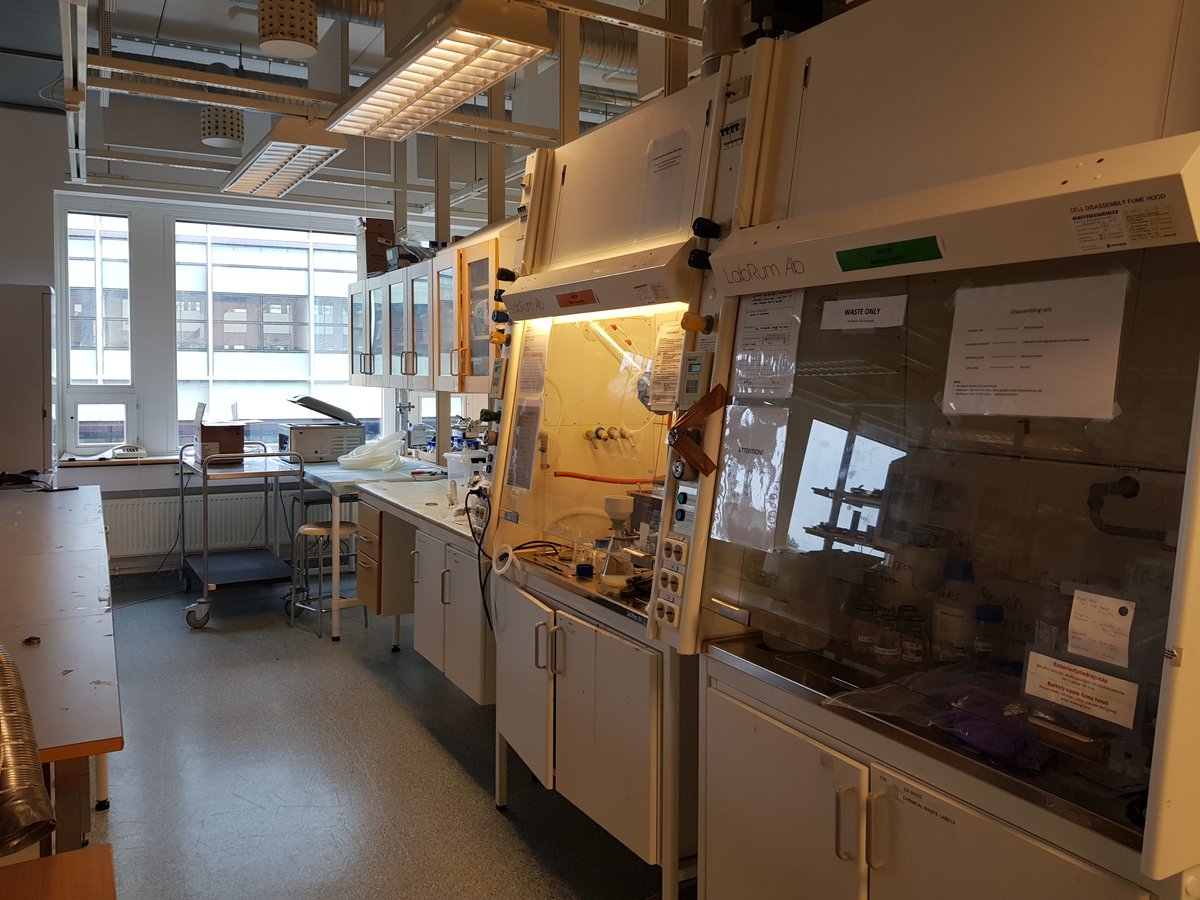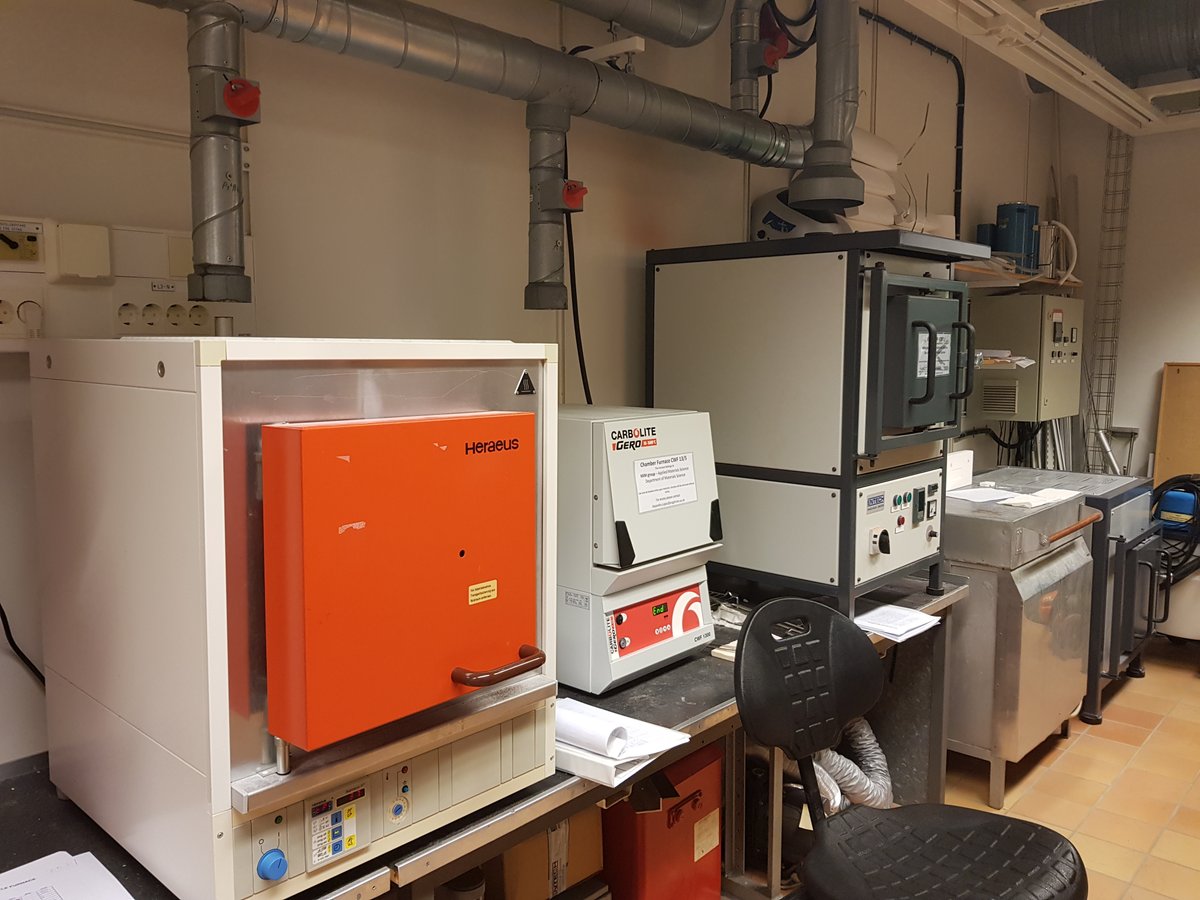
Ok lets take a look through the @StructuralChem1 lab! Development of new technologies begins with synthesis of new materials. This synthesis is carried out in many of the fumehoods that we have available 





For synthesis of many ceramic materials we share a number of high temperature furnaces with other groups. Including tube furnaces for synthesis under various inert or reactive gases. 





Additionally, a lot of synthetic work takes place inside our gloveboxes which are filled with Argon. Many chemicals we use for battery research (like Li metal) are air or moisture sensitive and so well maintained gloveboxes are a must! 



Another two Ar boxes, one for sodium work and the PUB box (aka, Polymers Used in Batteries). These are also the boxes where we build our batteries before we test them. Speaking of testing batteries.. 



We have 100's of channels for connecting batteries. Most commonly we cycle pouch cells (shown in my schematic earlier and in the photo) but also coin (or button) cells and swagelok cells. 



We also have high precision battery cycling equipment as well as ovens for testing batteries at elevated temperatures. 



You may have noticed the radioactive box in the previous image :). This is where Fe-57 sources are kept after use in our Mössbauer spectrometer. This one was constructed in house many years ago. It could almost go into a museum if it wasn't so useful for us to this day. 

Speaking of instruments, we have access to multiple characterisation methods for understanding the materials we make. Here we have our (old) XPS instrument, used for characterising surfaces and a TGA-MS for studying thermal behaviour. 



Last but not least we have our diffractometers, including my personal favourite the Stoe diffractometer (shown with the green light) where I do all my diffraction experiments on batteries. 



One thing that I always enjoy about visiting other labs are the personal touches that PhD students or postdocs add to the lab. Especially when they are in charge of running the gloveboxes :) 





And finally, the most important piece of equipment of all. The coffee machine. Here we modified this one to show short clips from Futurama while your coffee is being made 🙃 

So thats a brief run down of the main lab facilities! There is much more equipment that we have access to which is not directly a part of the Structural Chemistry group but we have access to (SEM, TEM etc)
• • •
Missing some Tweet in this thread? You can try to
force a refresh













